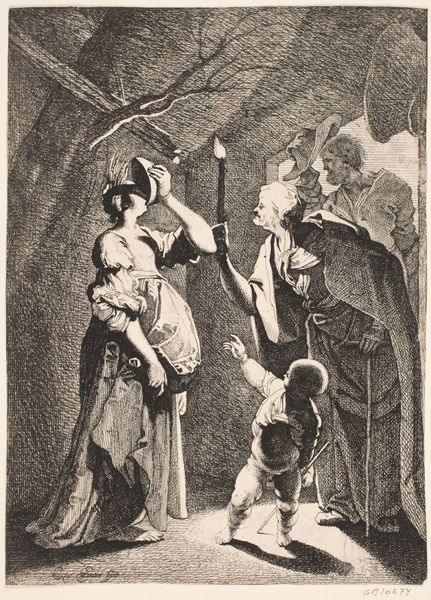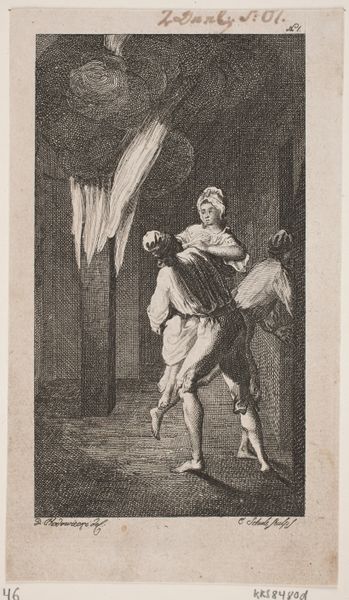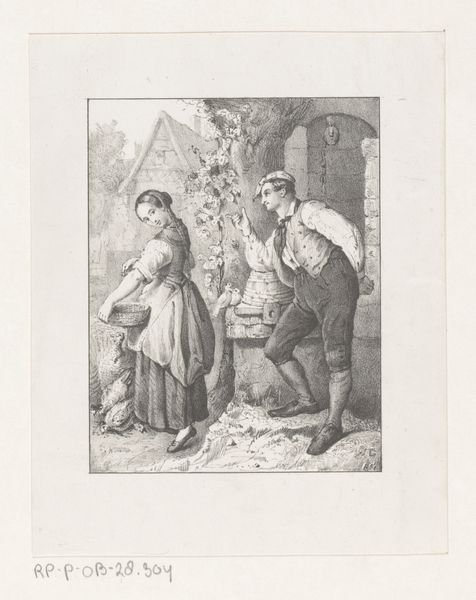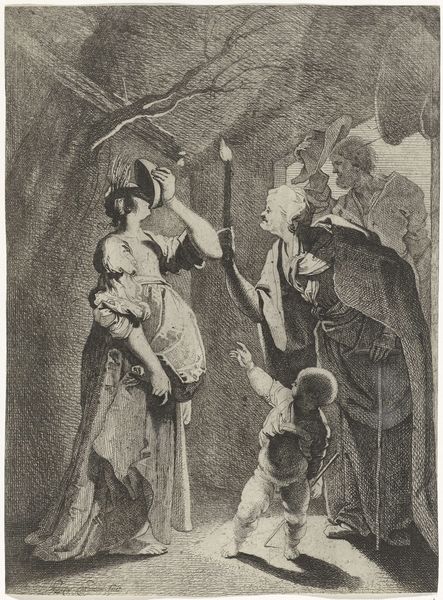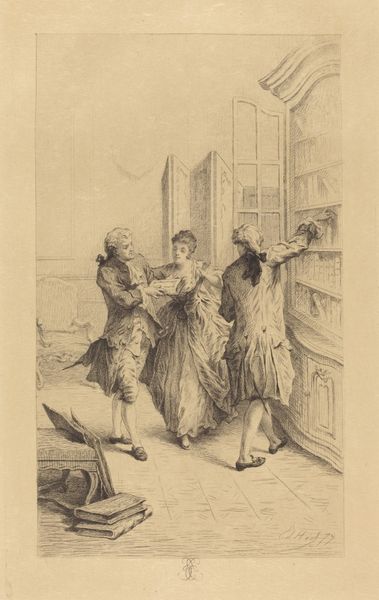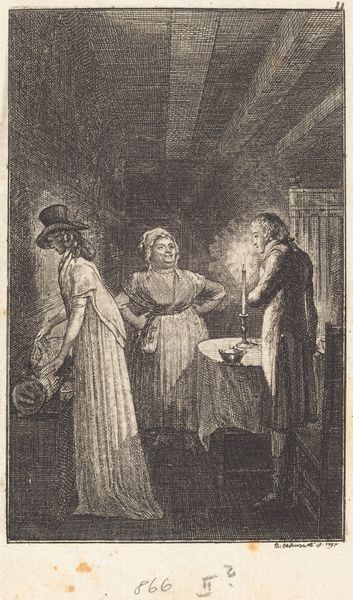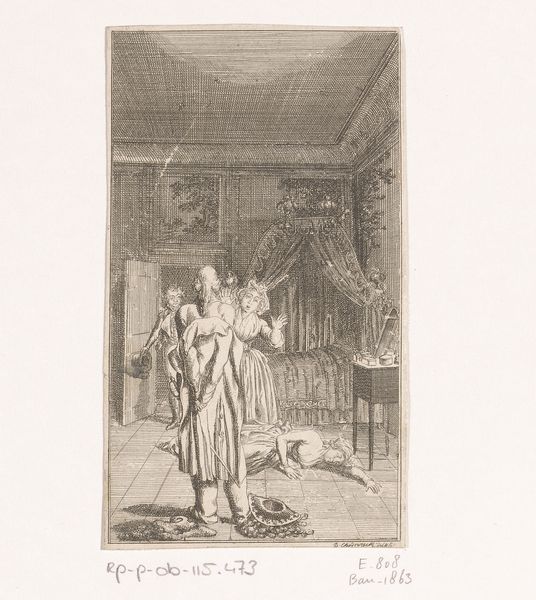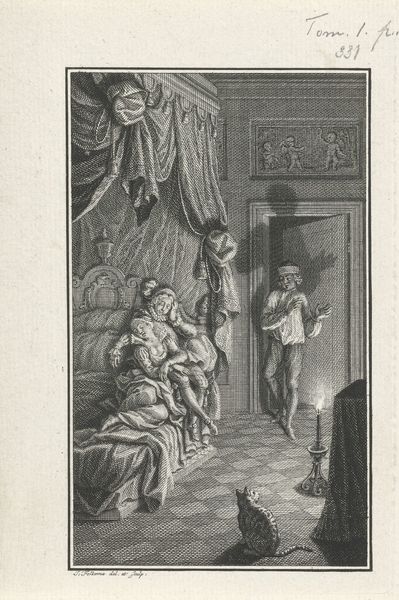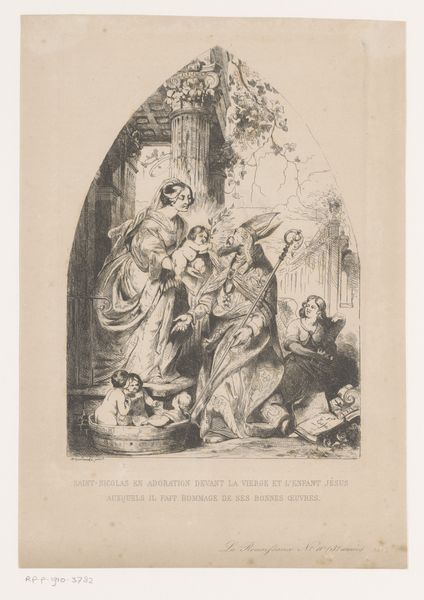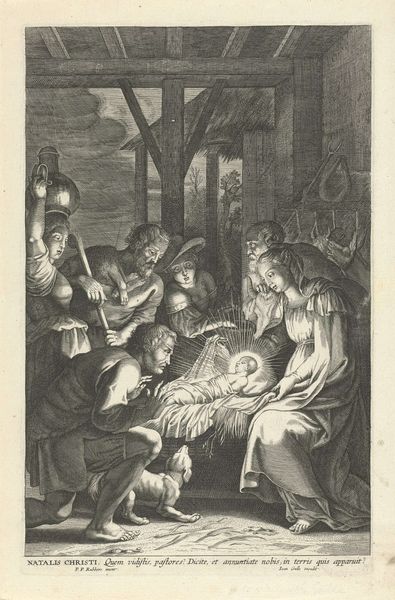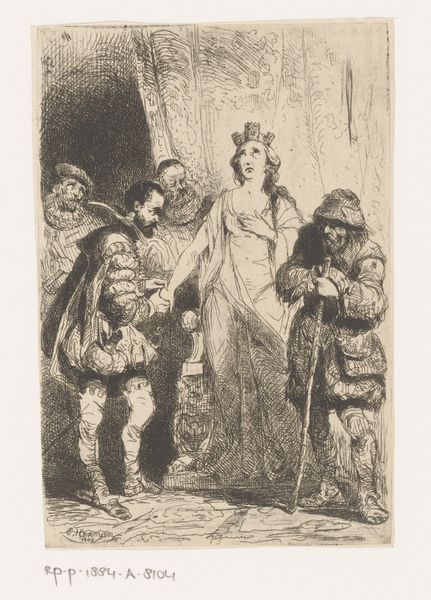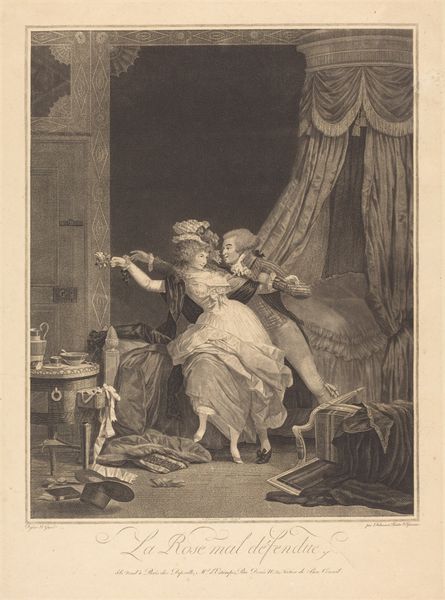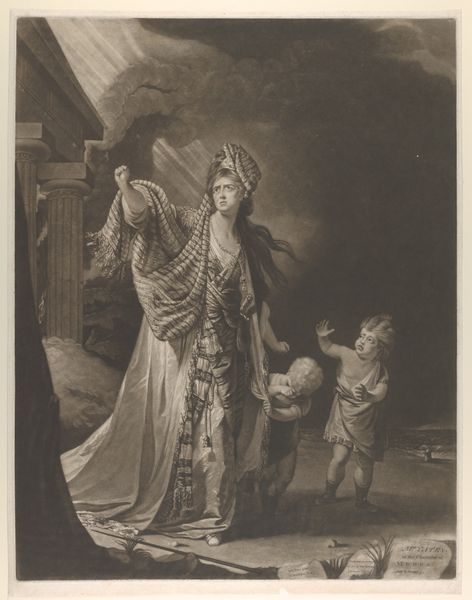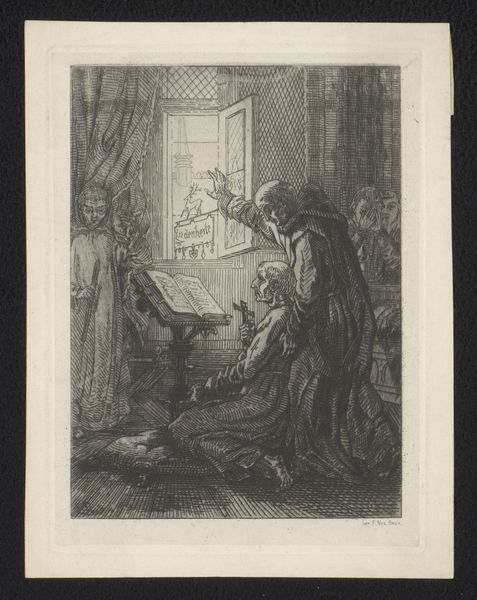
engraving
#
baroque
#
figuration
#
history-painting
#
engraving
Dimensions: height 228 mm, width 160 mm
Copyright: Rijks Museum: Open Domain
Curator: Let's examine this intriguing print, “Ceres en Stellio,” attributed to Karel van Mander III, dating back to somewhere between 1620 and 1670, held in the Rijksmuseum's collection. It is an engraving illustrating a scene with Ceres and Stellio. What's your immediate take? Editor: Ooh, instantly dramatic! The heavy shadows and the single flame – feels very Caravaggio-esque. It pulls you in like a secret being whispered in the dark. Almost makes me want to light a candle and whisper back! Curator: It certainly utilizes dramatic light, a key element of the Baroque style, of which it’s a strong example. The means of production, specifically, the etching technique used here, are important. How would an artist approach this? What does this meticulous line work contribute to the final affect? Editor: Definitely emphasizes that feeling of hushed intensity, I think. All those tiny lines build up the figures, make them feel tangible, weighty. The woman holding the drum aloft... such careful construction in each fold of her dress. Curator: Agreed. We're talking about both a material process—the patient labor of engraving—but also social access. Prints democratized art. They took images, usually available only to elites, and through reproducibility, delivered them to a far broader consumer base. What implications did it have on dissemination of style, form, and fashion? Editor: Makes me think about art *spreading*, almost like pollen carried on the wind! And if we think about this image as Baroque visual vocabulary, suddenly those visual flourishes become widespread— architecture, theater, even fashion pick up on it...fascinating. It does create such interesting associations, the piece in relation to cultural significance and aesthetic language. Curator: Exactly. So, "Ceres en Stellio," an engraving. It isn’t simply an isolated artwork, but a product of the materials at hand, and it’s meant to participate in social distribution on a wider scale than an isolated work can often provide. Editor: I’ll definitely see this print with a bit more contextual and material awareness the next time.
Comments
No comments
Be the first to comment and join the conversation on the ultimate creative platform.
